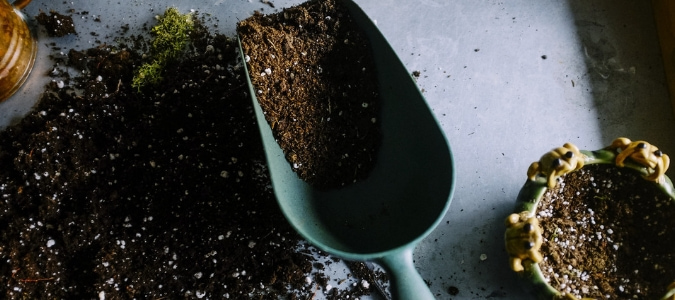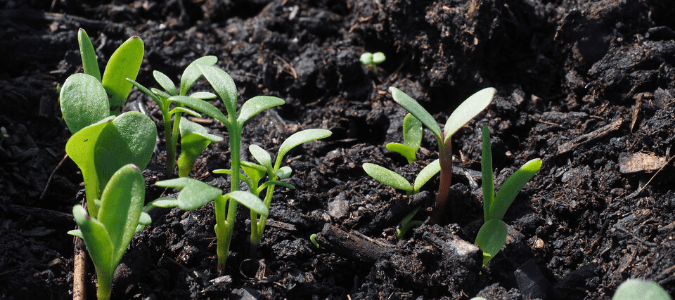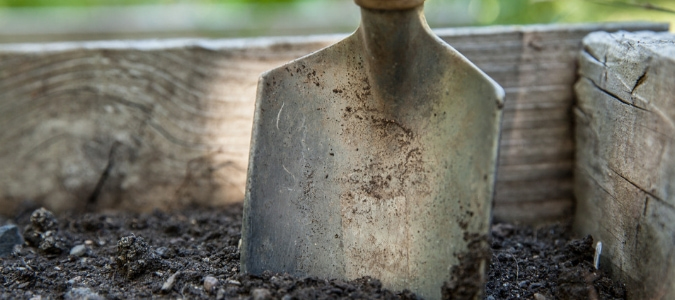Are you a homeowner interested in making your own compost? Composting is an easy process to start and maintain, regardless of your size requirements.
It’s also one of the easiest and best first steps for garden fertilization, and healthy lawncare.
Despite what you may have heard, home composting is not complicated, it’s not messy and it doesn’t smell bad when you do it right.
In fact, learning how to compost the right way is super simple. Once you get started, it’s a great, environmentally-friendly way to repurpose food scraps and a variety of other organic materials into a superfood for your plants and gardens.
Types of Composting
First things first, let’s take a look at the various types of composting. The three most popular and widely used methods are cold composting, hot composting and vermicomposting.
Cold Composting
Composting in its most basic form is “cold” composting. This involves collecting plant waste from your lawns or gardens and combining it with the organic waste materials from your kitchen and storing them in a dedicated container or a maintained pile.
Cold composting requires about a year for the first layers of material to decompose into compost.
Hot Composting
Unlike cold composting, “hot” composting requires a little more activity and dedication. In return, the decomposition process is greatly accelerated, producing usable compost in as little as 1 to 3 months in warmer weather. This is the most popular kind of composting.
The four basic needs of hot composting are:
- Carbon
- Nitrogen
- Water
- Air
The four components, when combined in proper ratios, will sustain the microorganisms that speed up the same decomposition process that’s found in cold composting.
Hot composting also allows for greater output, as you can start new bags composting as soon as you fill the last one. This ensures a regular supply of compost once the first supply is done “cooking.”
For best results, begin the process in the spring or fall when you have the most lawn and garden waste available. A lawn care professional can also provide advice for the best method to get started.
Vermicomposting
The third method, which is less common than cold or hot composting, is vermicomposting.
The term “vermi” translates to “worm”. Vermicomposting is the process of composting waste materials with the help of redworms! You get a worm bin with proper ventilation and plenty of worms, and put your waste materials in it. As the worms happily munch down on your kitchen and garden waste, they release “castings” which are rich in nitrogen, and nitrogen makes happy plants.
How to Make Hot Compost
Beginning your composting is as simple as finding a bare patch of earth, as small as a couple of feet square, to begin your pile.
The bare dirt makes it easier for worms and other compost-friendly organisms to get into your compost pile and start working. It also allows for proper drainage, especially in wet climates, to keep your compost pile from getting over-saturated.
On this bare ground, spread a few inches of twigs, thin branches and other loose material as a base to allow for proper drainage and airflow.
Combine Green and Brown Materials
Gather and save your composting materials (lawn, garden and organic kitchen waste) until you have enough to create a pile at least two feet thick on your bare patch.
Try to start with a fairly even combination of fresh materials like your daily kitchen scraps and fresh grass clippings with brown material like dried leaves, straw and plant or bush trimmings. These dried materials are an important source of carbon, an essential ingredient in composting.
Layer brown materials on top of green materials, repeating as needed.
If your pile starts becoming smelly after a few days, or looks too wet, add more brown materials to help maintain a moisture balance. If everything starts looking dry and brown, toss in some more green stuff.
Water Your Compost Pile
You’ll want to give your compost a light sprinkling of water every few days, especially in dry or hot weather conditions. Basically, you’re looking for the overall consistency of a damp sponge. But, you don’t want it so wet that you drown the microorganisms. If your compost pile is too wet, it will begin to rot.
Stir Your Compost Pile
Now that your compost pile is being fed and watered, it needs to move around a little to stay healthy.
Using a garden fork or shovel, turn your pile weekly. This evenly distributes the decomposition process and gives it some oxygen. You should wait to turn the pile, especially the first time, until it has achieved the proper temperature in the center.
Not only does stirring speed up the decomposition process, but it also keeps your pile from getting overly compressed. This can lead to unpleasant odors.
How to Check Your Compost Pile
The easiest way to tell if the process is working is to reach your hand into the center of the pile and get a feel. Proper composting should create a noticeable warmth in the deeper parts of the pile.
If this idea gives you the heebie-jeebies, you can buy a compost thermometer for around twenty dollars that will give you a more accurate reading.
The ideal temperature for a compost pile is 141F to 155F. This is hot enough to destroy weeds, pathogens, harmful fungus, bad bacteria or unwanted pests. But it’s not so hot as to kill your friendly organisms, worms, or to risk combustion.
Composting Equipment
- Hand spade
- Compost caddy or kitchen compost bin
- Compost thermometer
- Insulated composting blanket (great for colder climates)
- Shovel, garden fork and raking stick
- Compost screener
- Rotary soil sieve or composting screens
What Can I Compost?
- Fruit and vegetable scraps and peelings
- Coffee grounds
- Eggshells (crushing helps them break down faster)
- Garden, grass, hedge and other plant clippings
- Dry leaves (oak leaves work well)
- Straw or hay
- Sawdust or woodchips (from untreated wood)
How Do I Apply Compost?
Once your compost pile stops creating heat and the materials are dry and crumble easily in your hand, your compost is ready to use!
Applying compost to your yard isn’t complicated, but how and the amount depends on where you’re applying it. If you’re unsure of how to get started, contact a lawn service expert.
Here are some good rules of thumb.
New Lawns
Add one or two inches of compost, mixed into six inches of existing soil prior to sodding or seeding.
Established Lawns
Add 1/4 to 1/2 inch of compost to your existing lawn or bare spots just before thoroughly aerating the application area. Then, take the same amount under shrubs or hedges.
Gardens & Raised Beds
You can even plant with compost. Add one or two inches of compost, mixed into six inches of existing soil before seeding or replanting. For new planting beds mix compost with a 25 to 75 ratio with fresh soil.
No matter where you apply compost, make sure it isn’t too hot outside. If compost is applied to a lawn when it is too hot out, it can burn the lawn. Applying compost is most effective when it is done in spring or fall.
How Much Compost Per Square Foot?
When composting a large area or plot, it’s important to know the exact square footage of soil. Then you can determine how much compost you need.
Typically you’ll use 1/4 to 1/2 inch of compost if you’re adding it for topsoil. If you’re amending the existing soil, you’ll add one or two inches of compost, mixed into six inches of existing soil before seeding or replanting.
Based on these calculations, you’ll need approximately 16 cubic feet of compost to amend a 10ft-by-10ft garden plot (to a depth of six inches), or 1.6 cubic feet of compost per square foot of soil.
Amending soils that a homeowner reuses annually is an important step in improving soil fertility and plant nutrition, but too much compost can create too much nitrogen in your soil and burn your plant’s roots. Start out by mixing compost a ratio of 25 to 75 with fresh soil.
The proper application of good compost can be a vitally important component of your home’s lawns and gardens.
Composting Benefits
Adding nutrient-rich compost to your soil encourages healthy plant growth, increased flowering and regeneration and helps restore important minerals to depleted soils.
Compost is free, easy to make, and environmentally friendly. Keep in mind that composting is just one step in a comprehensive care and fertilization plan.
For proper lawn and garden fertilization, there are many required steps. These can include soil analysis, treatment plans, water table considerations, etc., that are best handled by a lawn professional.
Lawn service experts will have the proper training, knowledge and equipment to make the correct decisions for your specific property and situation.
ABC Can Set Up a Schedule To Keep Your Lawn Healthy
It can be difficult to keep track of what your lawn needs and when. Instead of trying to handle lawn care yourself, count on the professionals at ABC Home & Commercial Services. Our team is highly skilled and will create a lawn care schedule that keeps your lawn healthy and strong. We even use a compost that is created here in Central Texas—Dillodirt.



